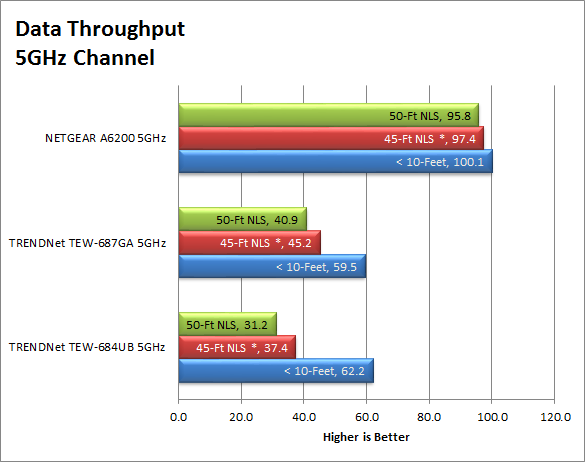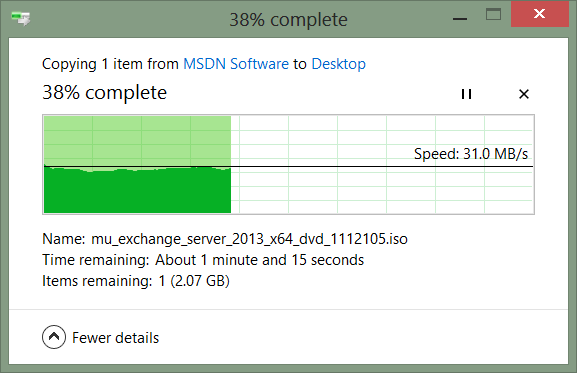Performance -
We have said it before and we will say it again; you cannot count performance by numbers alone. We will always give you both the raw numbers as well as the other items that make up for how well (or not so well) a product works. These are items like how quickly a USB adapter can initialize once it is plugged in. How quickly does it connect? We take a look at all of these for the NETGEAR A6200. For testing we used a NETGEAR R6300 802.11ac Dual Band (Concurrent) Wireless Router. We connected to these at 10-feet, 45-feet, and 50-feet. The 10 and 45 foot tests were inside the house proper and the 50 foot test was outside through the Cinder Block walls. We tested the adapter using both the 2.4GHz and 5GHz band. We compared this to other adapters on the market using the same R6300 router. The results were eye opening to say the least.

Reception –
The reception on the A6200 was excellent. It has a good combination of antenna and power for return transmission. We had good speeds even outside the house and across our street (about 100 feet). We were a little surprised considering the fact that the A6200 did not have a major impact on our battery life.
Link Speed –
As we mentioned 2.4GHz and 5GHz will have different maximum link speeds. We were able to hit the maximum for both when connected to the R6300. The only time we saw our link speed drop was, of course, when we moved outside the house where reception started to drop off. Still within the house we had 300Mbps over the 2.4GHz channel and 850-867Mbps over the 5GHz channel.
File Transfer -
Although benchmarks are great they are not going to tell the full story. We also like to take a look at things you will really use a network adapter for. Here we took a 3.37GB ISO and moved it from a NAS device to our laptop. The data transfer was impressive with an average transfer rate of 30MB/s. The whole move took a little more less than two minutes. Not bad for a wireless connection.
Streaming Video -
With the A6300 we were able to pull in a couple of different video streams without any issue. It was interesting to see this in action. We were able to run Netflix, YouTube and an internal stream without stuttering in either video or audio. We do not see many people using this feature (and there are 802.11n adapters that can do the same thing), but it still shows that you are going to have enough bandwidth available to watch the videos you want.




